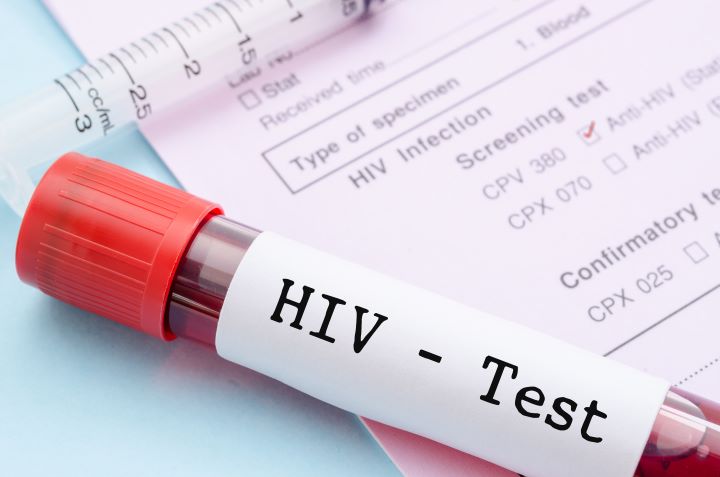What Is HIV and What Does It Do to the Body?
Human immunodeficiency virus (HIV) is a complex retrovirus that attacks the immune system, specifically targeting CD4 cells (T cells) that help the body fight infections. Left untreated, HIV can progress to acquired immunodeficiency syndrome (AIDS), a condition where the immune system becomes severely compromised. Understanding HIV—its transmission, effects on the body, and available treatments—is crucial for both prevention and effective management of the condition. Modern medical advances have transformed HIV from a terminal illness to a manageable chronic condition for many people.

Understanding Early Signs and Symptoms of HIV
The early manifestations of HIV infection often resemble a common flu, making them easy to overlook. Within 2-4 weeks after infection, approximately 40-90% of people experience acute retroviral syndrome, characterized by fever, fatigue, swollen lymph nodes, sore throat, muscle and joint aches, headache, and sometimes a rash. These initial symptoms typically last for a few weeks.
Following this acute phase, HIV may enter a clinical latency period. During this time, the virus continues to replicate at lower levels, and infected individuals might experience minimal or no symptoms for years. However, without treatment, the virus steadily depletes CD4 cells, gradually weakening the immune system. Late-stage symptoms may include persistent fever, night sweats, extreme fatigue, unexplained weight loss, chronic diarrhea, purple spots on the skin, and frequent or unusual infections—signs that indicate significant immune system damage.
Transmission and Prevention
HIV spreads primarily through specific bodily fluids, including blood, semen, pre-seminal fluid, rectal fluids, vaginal fluids, and breast milk. The most common transmission routes involve unprotected sexual contact with an infected person, sharing needles or syringes, and mother-to-child transmission during pregnancy, childbirth, or breastfeeding if the mother is not on effective treatment.
Prevention strategies are highly effective when implemented consistently. These include:
-
Using condoms correctly during every sexual encounter
-
Pre-exposure prophylaxis (PrEP) for people at high risk
-
Post-exposure prophylaxis (PEP) within 72 hours of potential exposure
-
Treatment as prevention (TasP), where people with HIV who maintain an undetectable viral load through medication cannot sexually transmit the virus to others (Undetectable = Untransmittable)
-
Never sharing needles or other injection equipment
-
HIV testing during pregnancy and antiretroviral treatment for HIV-positive pregnant women
Importance of Early Testing and Diagnosis
Early HIV diagnosis dramatically improves health outcomes and reduces transmission rates. HIV tests detect either antibodies produced by the body in response to HIV infection or viral particles. Most standard tests can detect HIV 23-90 days after infection, while nucleic acid tests can detect the virus as early as 10-33 days after exposure.
The CDC recommends that everyone between the ages of 13 and 64 get tested for HIV at least once as part of routine healthcare, with more frequent testing for those with risk factors. Early diagnosis allows infected individuals to:
-
Begin antiretroviral therapy before significant immune system damage occurs
-
Reduce their viral load to undetectable levels, eliminating the risk of sexual transmission
-
Take steps to prevent opportunistic infections
-
Access support services earlier
-
Make informed decisions about disclosure to partners and family members
Regular testing remains one of the most powerful tools in HIV prevention and treatment strategies, with many free and confidential testing options available nationwide.
The Role of Antiretroviral Therapy (ART)
Antiretroviral therapy (ART) forms the cornerstone of HIV treatment by preventing the virus from multiplying and destroying CD4 cells. Modern ART regimens typically combine three or more medications from different drug classes to attack the virus at various stages of its life cycle. While ART doesn’t cure HIV, it can reduce viral load to undetectable levels, allowing the immune system to recover and function effectively.
ART benefits include:
-
Preventing HIV progression to AIDS
-
Reducing HIV-related illnesses and complications
-
Extending lifespan to near-normal levels
-
Eliminating risk of sexual transmission when viral suppression is achieved
-
Improving quality of life
Treatment adherence is crucial, as missed doses can lead to drug resistance. Today’s ART options are more convenient than early treatments, with many patients taking just one pill daily with fewer side effects than older medications.
Understanding the Costs of Treatment in the USA
HIV treatment in the United States involves significant expenses, including medications, regular lab testing, and clinical care. Without insurance, the lifetime cost of HIV treatment can exceed $400,000. Monthly medication costs alone can range from $2,000 to $5,000 without assistance.
Several programs help offset these expenses:
| Program | Coverage | Eligibility Requirements |
|---|---|---|
| Ryan White HIV/AIDS Program | Medical care, support services, medications | Low-income individuals with limited or no insurance |
| AIDS Drug Assistance Program (ADAP) | Medication costs | Varies by state, typically for uninsured/underinsured |
| Medicaid | Comprehensive coverage | Income-based, expanded in many states |
| Medicare | Medical care and prescription drug coverage | Age 65+ or certain disabilities |
| Pharmaceutical Assistance Programs | Free or discounted medications | Varies by manufacturer |
Prices, rates, or cost estimates mentioned in this article are based on the latest available information but may change over time. Independent research is advised before making financial decisions.
Additionally, the Affordable Care Act prohibits insurance companies from denying coverage based on pre-existing conditions, including HIV. Most insurance plans now cover PrEP for HIV prevention and ART for treatment, though copays and deductibles vary widely.
Living with HIV requires a lifelong commitment to treatment, but with proper medical care and medication adherence, people with HIV can lead long, healthy lives. Regular communication with healthcare providers about treatment options, side effects, and financial assistance programs is essential for managing both health outcomes and treatment costs effectively.
This article is for informational purposes only and should not be considered medical advice. Please consult a qualified healthcare professional for personalized guidance and treatment.




